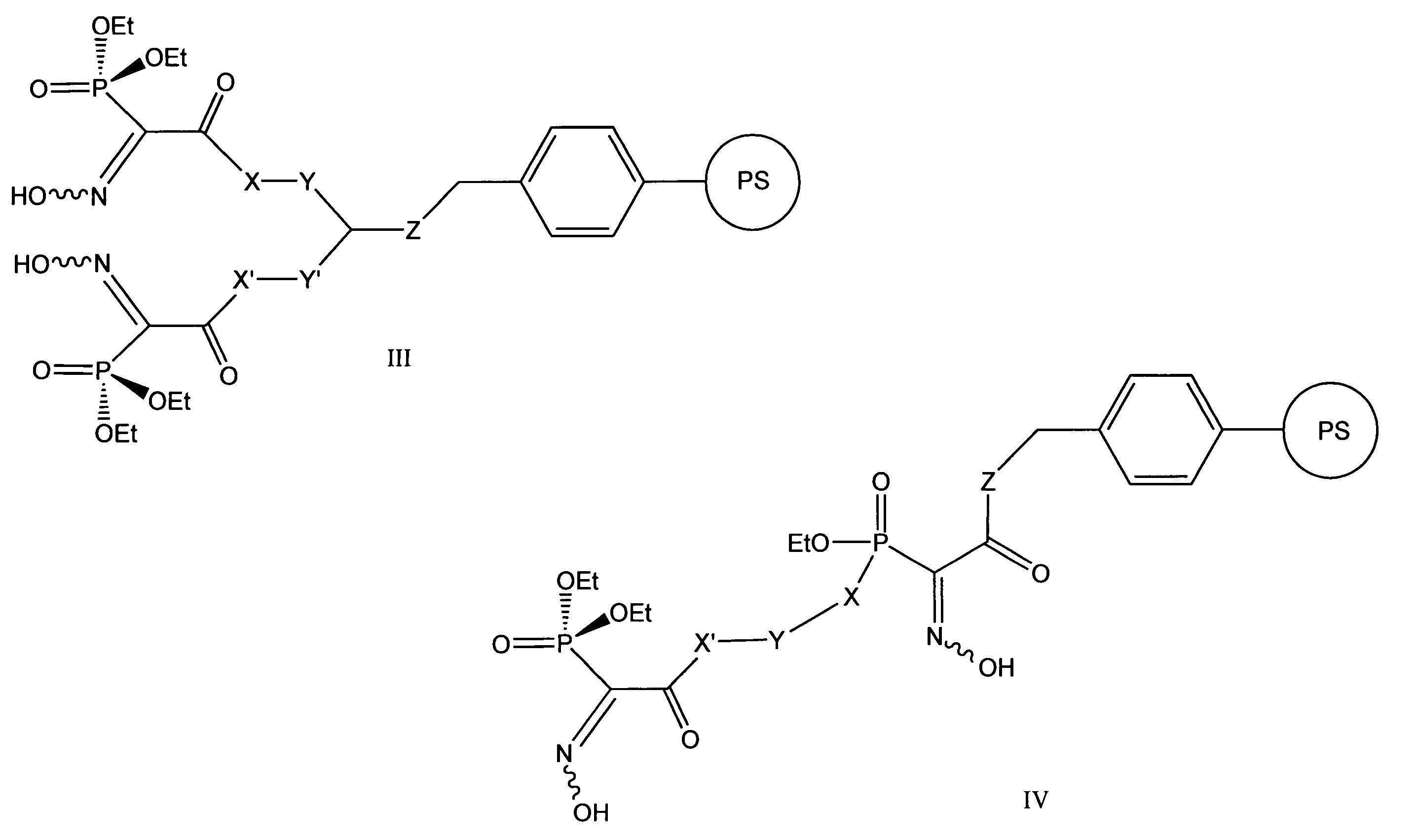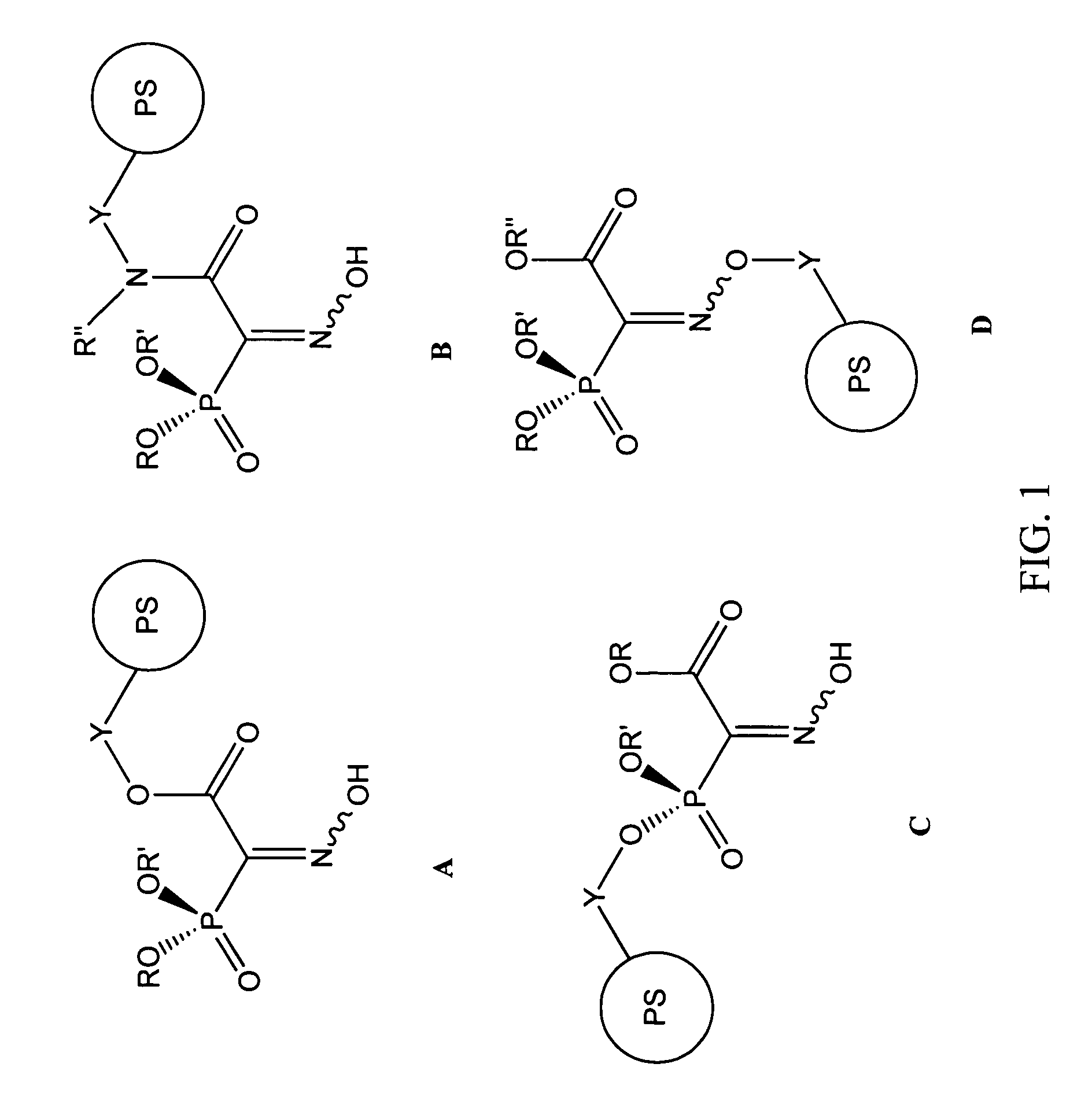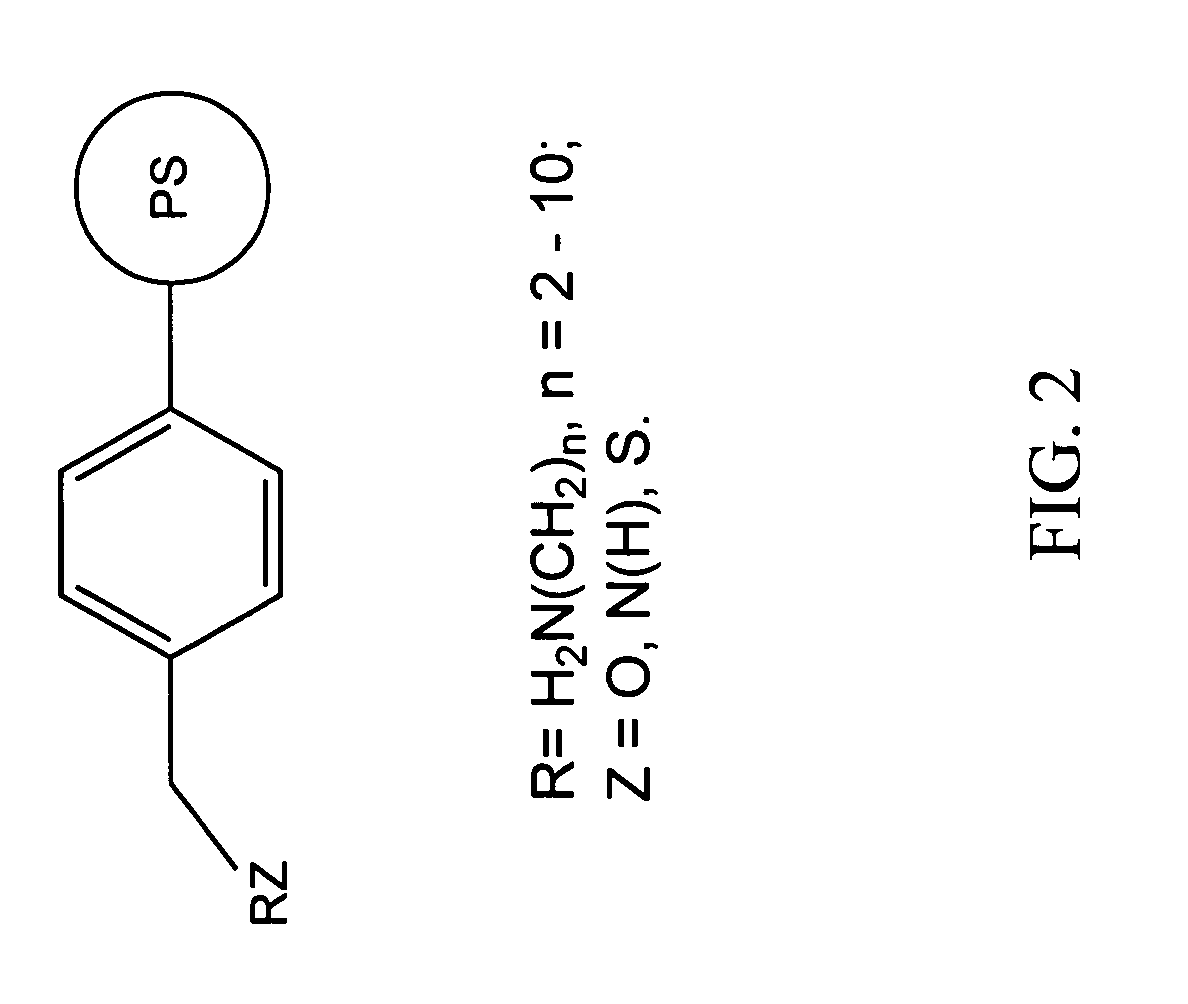Chelating agents for heavy metal removal
a technology of heavy metals and chelating agents, applied in the field of chelating agents, can solve the problems of increasing the threat of a torrent of polluters, material poses many serious health risks to humans, damage to internal organs, and damage to the central nervous system and reproductive system, and achieves the effects of reducing mass and volume, easy separation, and cost of disposal
- Summary
- Abstract
- Description
- Claims
- Application Information
AI Technical Summary
Benefits of technology
Problems solved by technology
Method used
Image
Examples
example 1
Methods and Apparatus
[0123]Reagents used in conjunction with the examples presented herein are typically AR grade, as may be ordinarily obtained from commercial vendors. NMR spectra were typically obtained on Bruker 360 or 500 MHz instruments and were referenced to tetramethylsilane (1H, 13C) or external phosphoric acid (31P). Melting points were measured with a Thomas Hoover apparatus. Molecular weights of ligands were determined by high-resolution FAB mass spectrometry. Elemental analysis was performed by Galbraith Laboratories, Inc. Metal ions were tested as chloride or nitrate salts. X-Ray crystallographic analysis was performed using the facilities of the University of Southern California chemistry department.
[0124]Synthesis of C-alkyl esters and amides of (hydroxyimino)phosphonoacetic acid was carried out using direct nitrosation of the corresponding P,P-diethyl or P,P-dimethyl phosphonoacetate derivative, with nitrosyl chloride or alkylnitrites (see, e.g., Kashemirov, B. A.; ...
example 2
A Comparison of E vs. Z Troika Acid Isomers
[0127]The structures of the two types of prototypical Troika acid isomers (E / Z) has been defined unequivocally by X-ray crystallography. However, the requirement of a suitable single crystal sample means that X-ray methods are not useful for solution or batch analysis of the many Troika acid derivatives that can be synthesized. An NMR method based on the magnitude of the easily measured 13C α-C-P spin-spin coupling constant of Troika acid derivatives has found application to distinguish the isomers quickly and reliably (see, e.g., McKenna, C. E.; Kashemirov, B. A.; Ju, J.-Y., “E / Z Stereoisomer Assignment by 13C NMR in Trifunctional Phosphonate α-Oximes and α-Arylhydrazones”, J. Chem. Soc. Chem. Comm., 1212, (1994)). The E and Z isomers of simple Troika acid ester derivatives are also readily distinguished by their UV spectra (see, e.g., Kashemirov, et al., J. Am. Chem. Soc., 117, 7285-7286, (1995)). The separation of a C-nitrobenzyl E / Z Tro...
example 3
Physical Properties of Troika Acid Derivatives
[0128]The Troika acids described herein are stable compounds with no known toxicity. Their salts (for P(═O)(—O)O− or C(═O)O− derivatives) with organic cations such as dicyclohexyl ammonium (DCHA+), are crystalline substances with well-defined melting points.
[0129]Quantum mechanical calculations of the molecular structures of the C-esters (using both the semi-empirical level of theory, and the Hartree-Fock (self-consistent field) method with a 3-21G* basis set and geometry optimizations, using, for example, a computer program such as GAUSSIAN, obtainable from Gaussian, Inc., Wallingford, Conn., or SPARTAN, obtainable from Wavefunction, Inc., Irvine, Calif.) give structural parameters consistent with the bond angles at the central carbon atom obtained from the X-ray structures of the Troika acids.
PUM
| Property | Measurement | Unit |
|---|---|---|
| dipole moment | aaaaa | aaaaa |
| pore sizes | aaaaa | aaaaa |
| pore sizes | aaaaa | aaaaa |
Abstract
Description
Claims
Application Information
 Login to View More
Login to View More - R&D
- Intellectual Property
- Life Sciences
- Materials
- Tech Scout
- Unparalleled Data Quality
- Higher Quality Content
- 60% Fewer Hallucinations
Browse by: Latest US Patents, China's latest patents, Technical Efficacy Thesaurus, Application Domain, Technology Topic, Popular Technical Reports.
© 2025 PatSnap. All rights reserved.Legal|Privacy policy|Modern Slavery Act Transparency Statement|Sitemap|About US| Contact US: help@patsnap.com



